
Use code 12DAYS for free shipping on all 12 days of Christmas promotional products

Yields, varieties, and clean growing – all pushed to limit in the ChilliMeter; a three way trial ft. 1Pot modules by Professor Pods – AKA Neil Ferguson. Not to be outdone by himself (or indeed by his alter-ego) the Prof’s also got a 48Pot XL system tearing it up with groundbreaking new strains. Put down whatever you’re doing – unless you’re reading on a device – and join us for insights that could really make a difference to the way you grow.

The ChilliMeter compares substrate performance by growing four different chilli varieties in three different ways. Neil has DNA Mills Ultimate Soil/Cork in 15 L / 3.9 gal AutoPot 1Pot modules, DNA Mills Ultimate Coco/Cork in another run of the same modules, and DNA Mills Ultimate Soil/Cork in conventional 15 L pots. Keeping it real-world, each AutoPot system occupies a footprint of just 1 sq m to show just what can be done in quite a modest space. But Neil, why compare?
“I’m interested in the differences between soil and full hydroponics in terms of ease of use, yields, maintenance, as well as how different chilli varieties respond to the systems/substrates. Ultimately, I aim to try and squeeze the best yields, from the lowest maintenance growth substrate, and if this can be done in a fully sustainable way, then even better!”

Producing chillies in Scotland, as Professor Pods does, is quite the challenge even with a full and unfettered inventory of growing tools. Notwithstanding this the Prof walks the line on eco-friendly and sustainable methods. In Neil’s own words “Professor Pods doesn’t use nasty/toxic chemical insecticides, we rely on biological insect control, and don’t use artificial flavours or colourings in our sauces.” This led him to an interest in coco in place of peat-based substrates. In the opinion of Neil and a great many others “coco is a fully sustainable, renewable growing substrate which fits in well with the company ethos of trying to minimise our environmental impact.”

There’s a wider point regarding sustainability here. If you grow with peat-based composts or substrate mixes then the ground is shifting beneath your feet. Owing to justifiable ecological concerns such growing media are quickly becoming out of bounds – in terms of acceptability and, perhaps soon, legality. Time to get comfortable with alternative materials that your plants can call home.
Having to break the honed habits of a lifetime can make a right old horlicks of your routine, or worse, your plants. Thankfully we’ve got growers like Neil all over the globe trialling and revising their substrate choices – growers whose tips we are delighted to pass on to you. So began the trial. And ‘trial’ was about the right word for it – certainly where the coco was concerned. Neil’s initial ambition to run coco and soil in like-for-like conditions led to a somewhat hamstrung start for the plants in coco. As it turned out distinct approaches were needed.
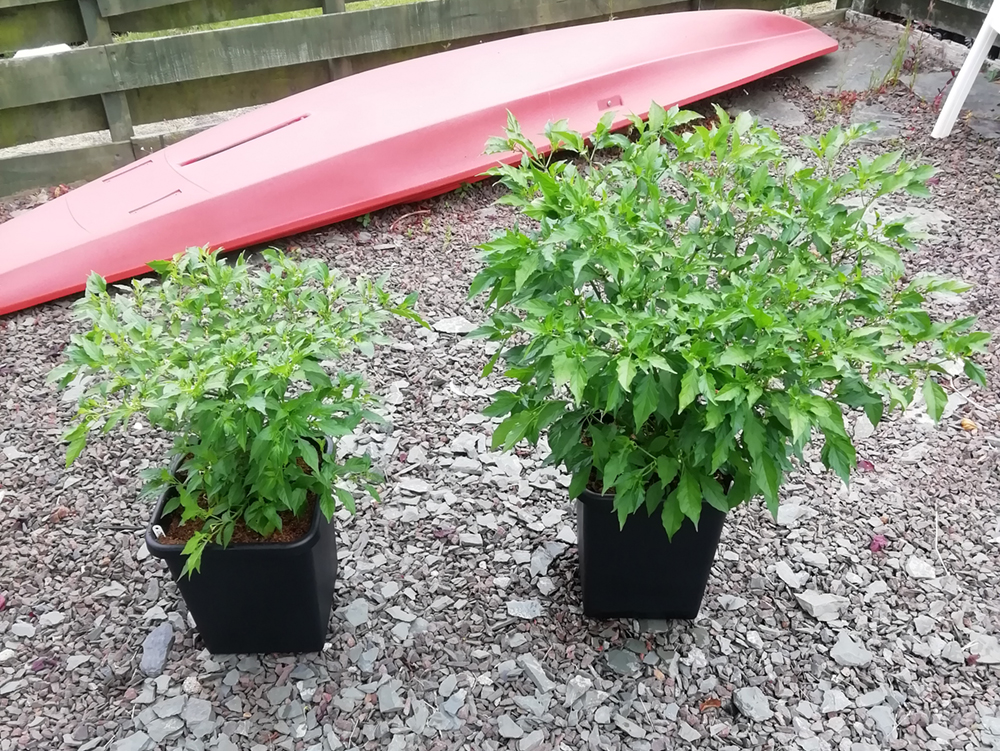
“The soil has built in feeds that last 3-4 weeks, after which I normally phase in a weaker feed, to let the plants acclimatise to the Mills nutrients. So, when the chillies looked like they had depleted the built in feeds in the soil, I started off feeding with a lowish EC value (0.6 – 0.7). I tried to do something similar with the Mills Coco. I’d read no end of anecdotes about people causing lockouts with coco, typically by using calmag when it wasn’t needed, or over feeding the plants with too high an EC value. It quickly became clear that the coco plants just weren’t happy. They were stunted and chloritic, whereas the chillies in soil were growing very quickly and looked great (both in the 1Pot modules and conventional pots).”
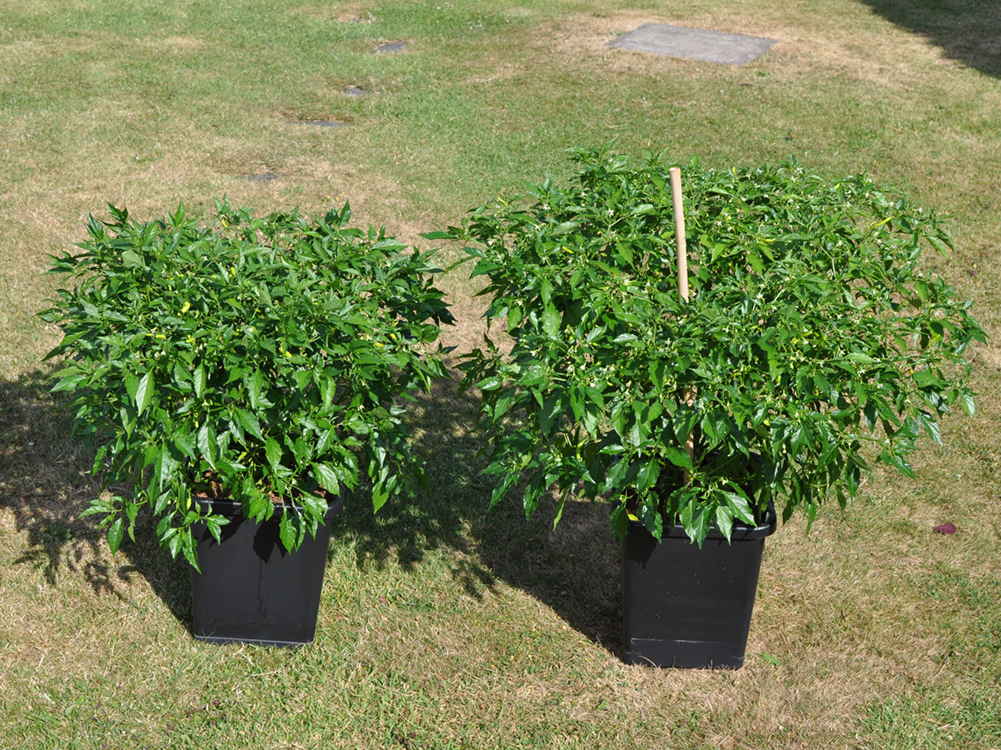
“I’d started at a low pH (5.5) so gradually increased it in steps. I found the coco plants began to be happier at pH 6.0 and above. However, the chlorosis and stunting persisted. So, again I gradually tested increasing amounts of calmag. To cut a long story short, I found that at pH 6.0 and above an EC of 0.4 from calmag the plants started to revive. I then had extensive dialogue with Plantasia and Mills. Their recommendation was to bump the feeds a little and increase the calmag further. Bingo! The plants came back strong. It was like a light had been switched on!”
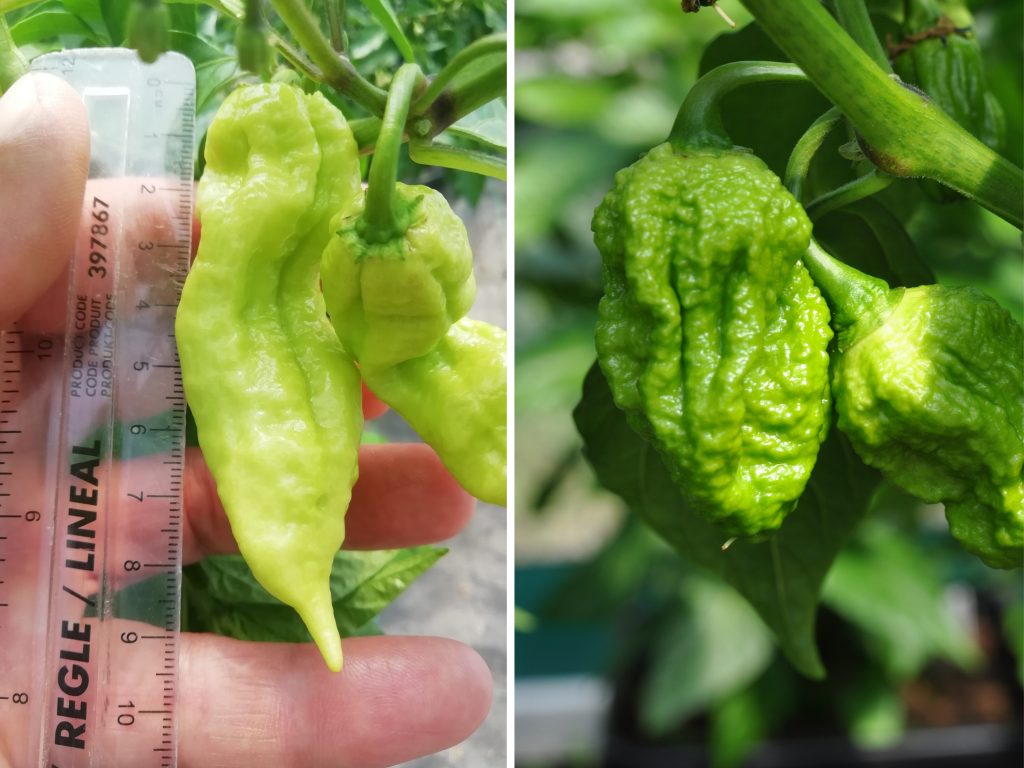
“The bottom line is that the coco needed a good dose of calmag for the chillies to be happy. Once that was done, I could then run the soil and coco plants using similar EC values from the nutes (and still am). Both are growing really well now. Obviously, all the shenanigans with getting coco dialled in, took some time, and therefore the coco plants were much smaller than the soil ones. However, I’m happy to say that they are catching up fast. Certainly, the coco grown chillies have already overtaken the soil plants in conventional pots, despite starting much smaller due to the setbacks I’d encountered – or caused, depending on your point of view!”
“A fringe benefit of the coco seems to be getting some really large pods, despite running effectively the same nutrients as the soil plants. Not sure if this is simply due to extra calcium, and this is something I’m testing out at present. Whatever, the pods on both soil and coco are really good, especially for this early in the season.”
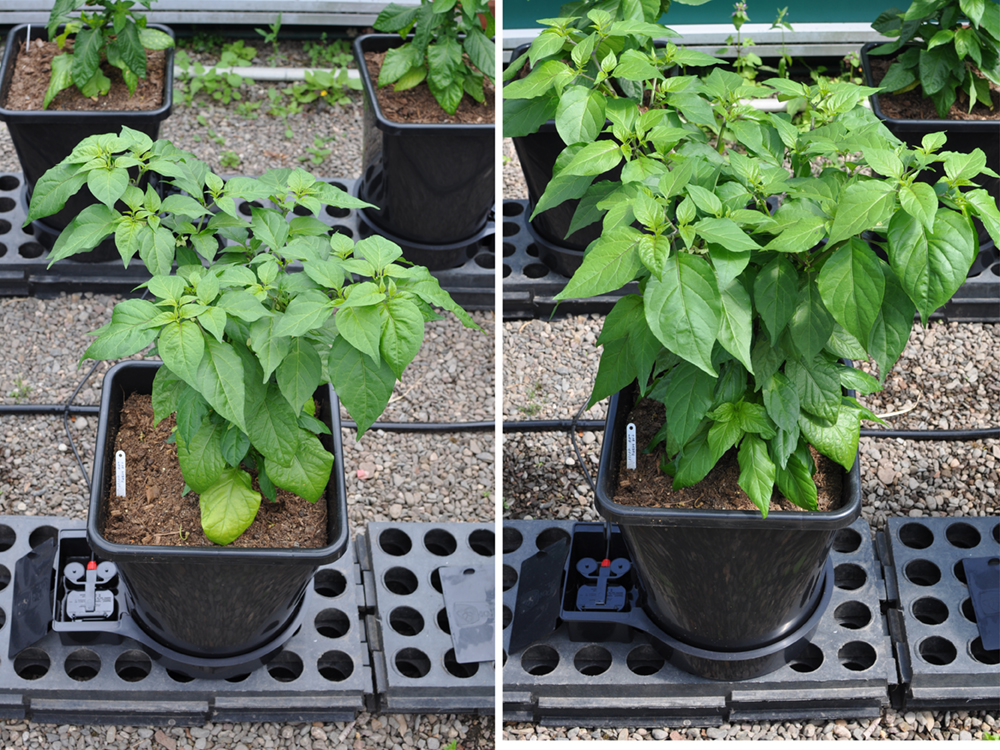
Now accustomed to the vicissitudes of coco, Neil is finding the soil and coco “equally easy to use, especially in AutoPots.” The breakthrough with a new, sustainable substrate is vital for Neil, as it will be for countless other growers. “Getting coco right is pretty important as my local soil prevents me from growing direct in the ground (high in the wrong types of metals, poor aeration, bad water retention etc). Before you even get to the yield and efficiency benefits, container growing is essential to me.”
Far from being denied the chance to grow, watering systems allow Professor Pod’s the opportunity to really turn it on with a vast variety of chillies – as his 48Pot XL system ably demonstrates. As the means behind the #48chillies48autopots project, the system proved a major success in 2020. 48 different varieties were grown “mainly C. chinense strains (habaneros and scotch bonnets).” However, Neil completely underestimated how large the chilli plants would get using the XL AutoPots – clue’s in the name Neil!
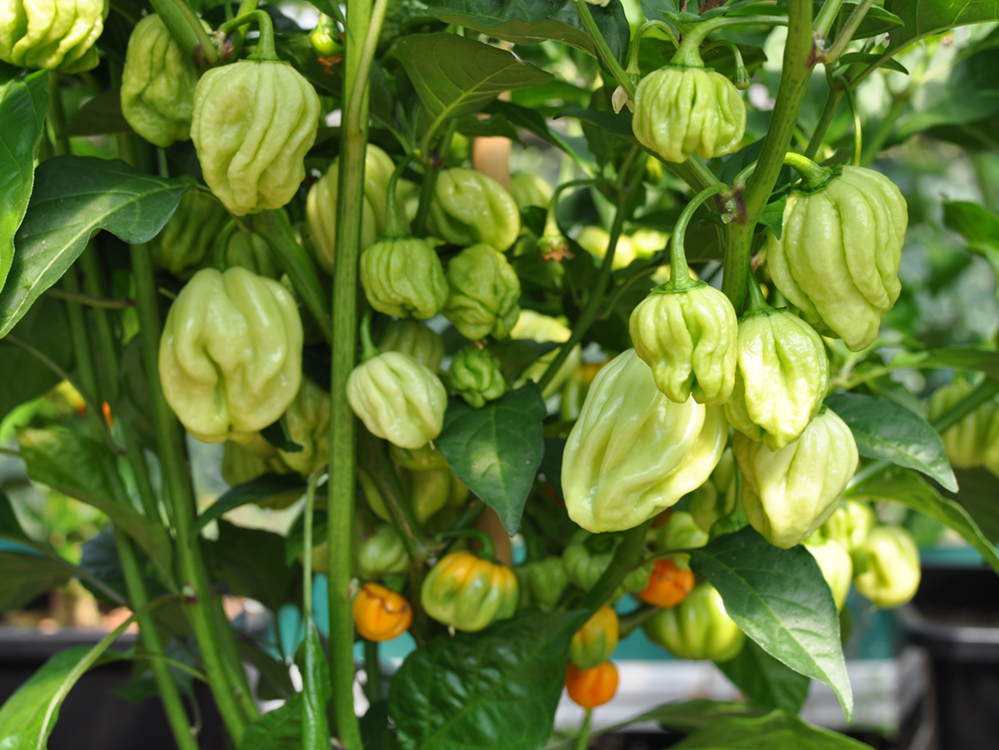
“In 2021, I’ve approached things a bit better, and spaced the plants out a lot more in a commercial polytunnel (each plant now has about 0.75 sq m in which to grow). This should allow the chilli plants to reach their true potential, to transpire more efficiently, and for overall aeration in the tunnel to improve. I’ve also introduced more C. baccatum strains into the mix, as these should have the potential to give very good yields.”
It doesn’t stop there. Impacts of plant density, appraisal of AQUAvalve5, organics trials, effects of growing locations, additive use, and conditioner reviews – all slated for the near future with Professor Pods. It’s part of an insatiable desire to get under the skin of future growing techniques in which we are blessed to share. As ever our thanks go out to Neil for his ceaseless explorations, his extensive feedback, and eloquent reports. Follow his exploits at @professorpods.
Home » Finding The Sweet Spot – With Professor Pods
| Monday | 9AM-5PM |
| Tuesday | 9AM-5PM |
| Wednesday | 9AM-5PM |
| Thursday | 9AM-5PM |
| Friday | 9AM-5PM |
| Saturday | Closed |
| Sunday | Closed |
